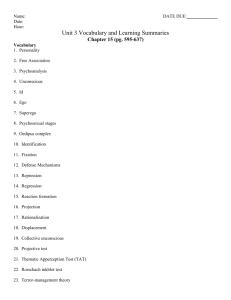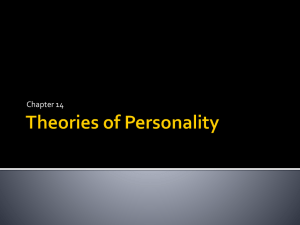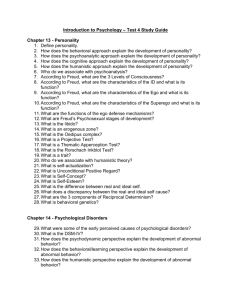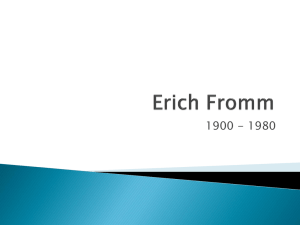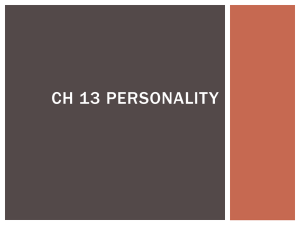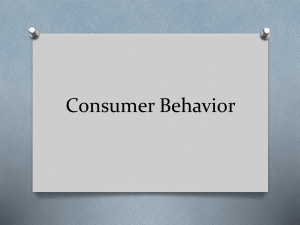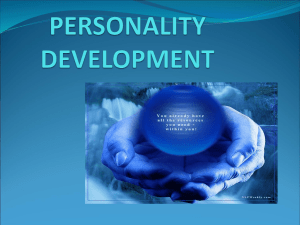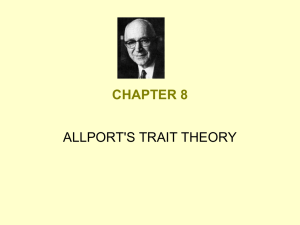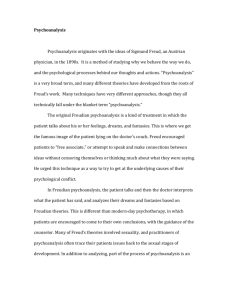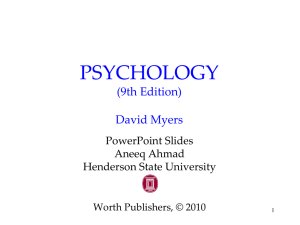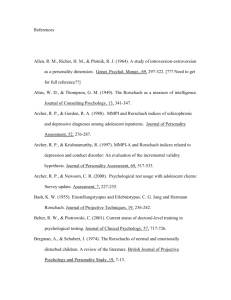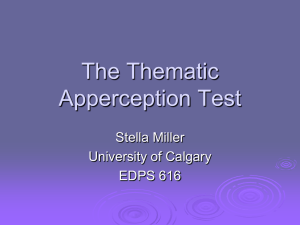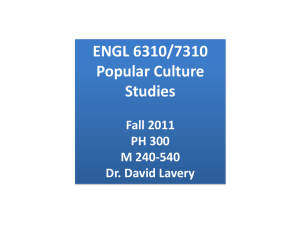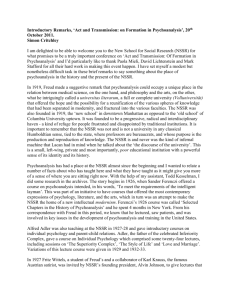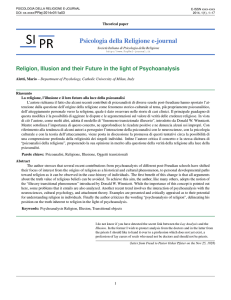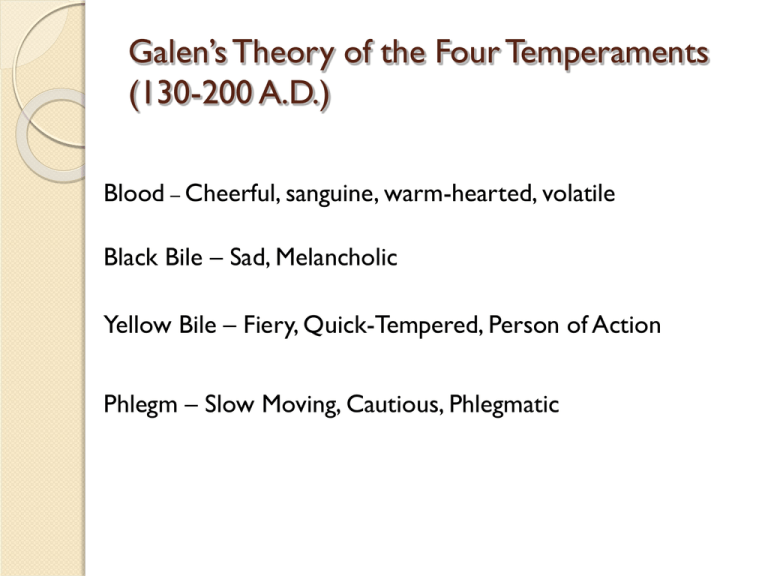
Galen’s Theory of the Four Temperaments
(130-200 A.D.)
Blood – Cheerful, sanguine, warm-hearted, volatile
Black Bile – Sad, Melancholic
Yellow Bile – Fiery, Quick-Tempered, Person of Action
Phlegm – Slow Moving, Cautious, Phlegmatic
When are Traits Good Predictors of Behavior?
When they are specific and limited
When an individual is extreme on the trait
Traits predict general behavior over time better than single instances
More specific situations help make traits better predictors
The influence of any personality trait can be overpowered by strong situations
The Metatrait Hypothesis
Personalities of different individuals contain different
clusters of traits, so that traits that are important for
you (self-schematic traits) are more useful than traits
that are not relevant to you (aschematic traits)
The “Big Five” Personality Traits
Extraversion
Agreeableness
Conscientiousness (Will to Achieve)
Neuroticism (Emotional Stability)
Openness to Experience
The Measurement of Personality
OBJECTIVE MEASURES OF PERSONALITY
Global Measures – MMPI (Minnesota Multiphasic Personality Inventory)
Specific Measures – Locus of Control
PROJECTIVE MEASURES OF PERSONALITY
EXAMPLES:
Rorschach Test, Thematic Apperception Test (TAT)
The Rorschach Test
The Rorschach Test
The Rorschach Test
The Rorschach Test
Thematic Apperception Test (TAT)
Thematic Apperception Test (TAT)
Thematic Apperception Test (TAT)
Sigmund Freud & Psychoanalysis
Freud: 1856-1939
Freud’s View of Human Nature
Motivation due to the Pleasure Principle
We are driven to action by instincts
◦ Eros: The Sex Instinct
Libido – Psychic energy associated with the sex instinct.
◦ Thanatos: The Death Instinct
Psychic Determinism: Nothing happens by
chance
The Unconscious: Part of the personality that is
inaccessible to the person
Freud’s View of Human Nature
Freud’s Model of the Personality
Id
◦
◦
◦
◦
Ego
◦
◦
◦
◦
Entirely unconscious
Irrational, impulsive, selfish
No conception of reality or morality
Primary Process Thought
Develops around 6-8 months
Sane & rational; The Reality Principle
Secondary Process Thought
Anxiety is the Ego’s response to threats
Superego
◦ Morality; internalizes rules; sense of right and wrong
◦ Ego Ideal – what person would like to be
◦ Punishes with guilt
Psychosexual Stages of Development
Oral Stage ( Lasts for first12-18 months)
Anal Stage (1-1.5 years through age 3 or so)
Phallic Stage (about 3 until about 6)
◦ Oedipus Complex
Latency Stage ( 6 until puberty)
Genital Stage (puberty through adulthood)
Anxiety & Defense Mechanisms
Repression- Ego keeps impulses from consciousness
Denial- Refuse to perceive reality
Displacement- Substitute acceptable for unacceptable things
Sublimation- Rechannel impulses to creative, socially acceptable
behavior
Projection- Attribute one’s own undesirable characteristics to
others
Reaction Formation- Behave opposite to impulses
Rationalization- Justify through excuses
Intellectualization- Dissociate from feelings; focus on logic
Undoing- Perform desirable act to make up for undesirable one
Compromise Formation- Use contradictory behaviors to gain
satisfaction from undesirable impulse
Psychoanalysis
Goal: Seek insight into the unconscious, achieve
catharsis & release from tension
Tools of Psychoanalysis:
◦ Hypnosis
◦ Free Association
◦ Analysis of Dreams
Other Influential People in Psychoanalysis
Carl Jung (1875-1961)
Alfred Adler (1870-1937)
Karen Horney (1885-1952)
Harry Stack Sullivan (1892-1949)
Otto Rank (1884-1945)
Carl Jung (1875-1961)
Psychic energy still an outcome of conflict between
opposing forces in personality, but it is not all about sex.
There is a personal AND collective unconscious
◦ Instincts & Archetypes
The Persona
The Shadow
The Animus & Anima
His “Theory of Psychological Types” is very influential in
psychology today; the basis of the Myers-Briggs Type
Indicator (MBTI)
Developed advanced techniques for the interpretation
of dreams.
Alfred Adler (1870-1937)
He called his system “Individual Psychology”
An Individual’s Goals direct his or her behavior
◦ Striving for perfection & completion
◦ Overcoming feelings of inferiority & striving for superiority
Organ Inferiority
Masculine Protest
Inferiority Complex
Social Interest
Style of Life
Early Childhood Experiences are Critical for Development
◦ Parenting Style (pampering vs. neglect) determine style of life
◦ Birth Order is a critical variable
Goals of Psychotherapy: To promote a socially interested
style of life & overcome feelings of inferiority
◦ Uses standard psychoanalytic techniques, especially dream interpretation
Third Force Psychology
A Reaction against determinism of Behaviorism &
Psychoanalysis
◦ Human behavior is NOT determined
◦ Humans are free to choose their own existence
A Combination of Humanistic & Existential Psychology
Focus is on helping healthy individuals achieve full
potential
Humanistic Psychology: People are innately good; We
strive to actualize our inner potential
Existential Psychology: We need to create meaning in
our life and “Take charge”
Third Force Psychology
Famous Third-Force Psychologists
◦ Martin Heidegger (Existential)
◦ Rollo May (Humanistic)
◦ Erich Fromm (Existential)
Psychopathology results from cultural forces that
prevent us from creating meaning
◦ Abraham Maslow (Humanistic)
Psychopathology results from failure to satisfy
needs (especially self-actualization needs)
◦ Carl Rogers (Humanistic)
Psychopathology results from a lack of positive selfregard created by “conditions of worth”

